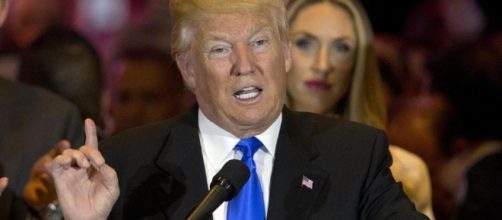Donald Trump undoubtedly won the race for the White House in an atypical and controversial election. On the other hand, both the Democrat and the Republican Parties emerged from the presidential campaign with issues that must be faced urgently. Paradoxically the Party with the most to lose is the one that would normally be seen as the winner, the Republican Party which must finally confront the internal fractures that have emerged in recent years.
Democratic consolidation
The Democrat Party has the task of preparing for the next presidential campaign in 2020.
Due to age neither Hillary Clinton, nor Bernie Sanders will be the next candidate for the Oval Office and therefore the opportunity has arisen for young politicians to stamp their credentials as Barak Obama did during the George W Bush presidency.
This task has been made easier by the need to preserve Obama’s presidential record in the face of concerted Republican efforts to cancel the last eight years and to reform the party into a new image. As in all periods after a bitter loss, the Party will need to present a united front because the last few weeks have shown that the major opposition will not be able to do so while Donald Trump resides in the White House. Clinton's legacy of majority popular support will make this task even easier.
The Battle of the Republicans
While ostensibly the winner after the round of elections on November 8th by regaining the White House, maintaining the majority in both Houses and with the prospect of creating a deeply conservative Supreme Court for the next decade at least, the Republican Party continues to show that it is suffering an identity crisis that will not be resolved under the Trump Presidency.
The attempt to scrap the House Ethics Office and the wavering about when and how to abolish the controversial, for them, Obamacare Bill clearly demonstrates that the internal weaknesses exposed by the so-called Tea Party have widened even more.
The re-election of Paul Ryan as House Leader has also created conditions for more potentially divisive issues given his lack of rapport with the incoming President that became very apparent and public during the presidential campaign.
Over all this looms a shadow in the shape of a Russian Bear that will make the divisions in the Party even more dangerous.
Donald Trump’s open doubts about the allegations of Russian interference in the run for the Presidency puts him at odds with widely experienced Republicans such as John McCain and Mitch McConnell - differences that will be exposed during the hearings for the confirmation of the nominee for Secretary of State Rex Tillerson considered by many on both sides of politics as too friendly towards Russia.
Public battlefield
Yet the battle within the Republican Party will not be fought in the Party rooms but in the most public of arenas, the Senate and Congress. The Senators and the Congressmen will be forced to publicly demonstrate whether their loyalty to the core values of the Party is more important that that towards their President.
This is the battle that will ultimately decide the future direction of the Party and also the course of the next presidential campaign.
Too many Republican politicians stated openly their opposition to the proposals made by Donald Trump during the campaign for them to now give him their full and unqualified support of every decision coming from the Oval Office. These differences have already been exposed by the rift over the future of Obamacare and the Russian interference and they will become more apparent with the other proposed Trump agenda items.
The Democrat and the Republican Parties are now in a fight for the future. This fight will be played out over the next four years and at stake is not only the future of the country, but also the future relevancy of both Parties. The decisions to come will be hard on all involved and nobody yet knows the ultimate cost of these struggles.

